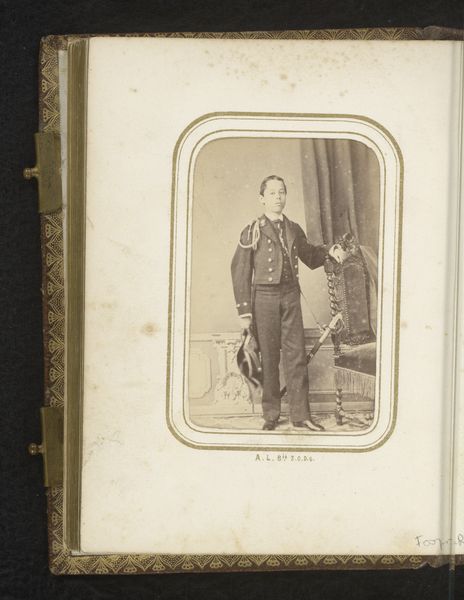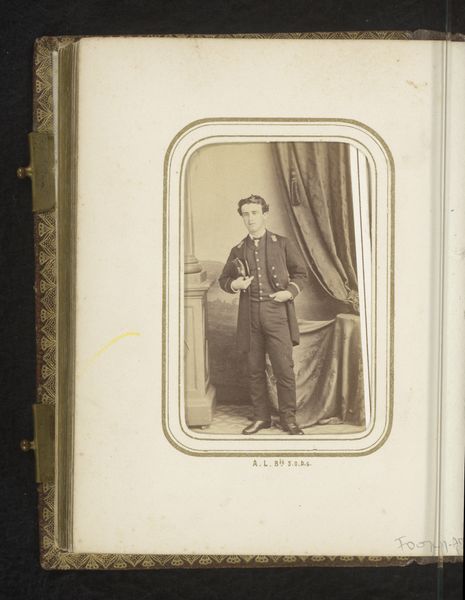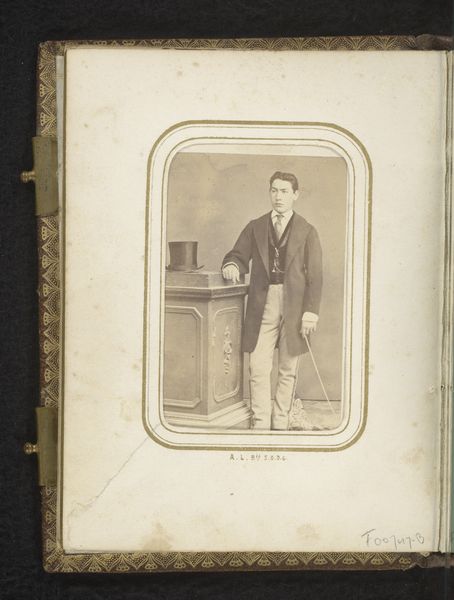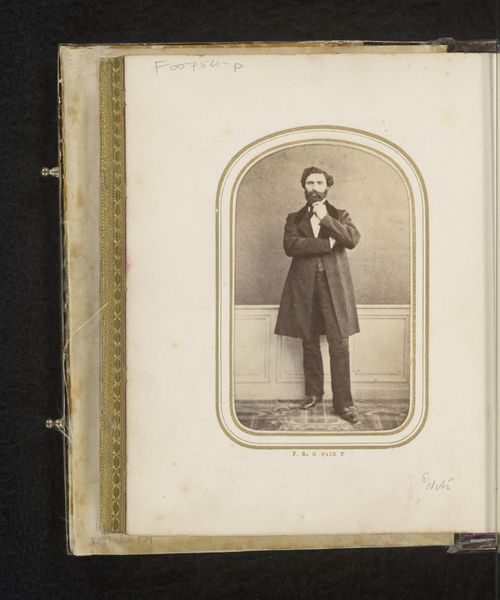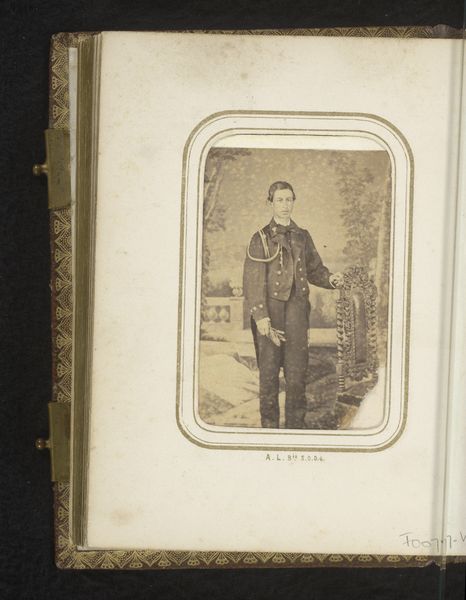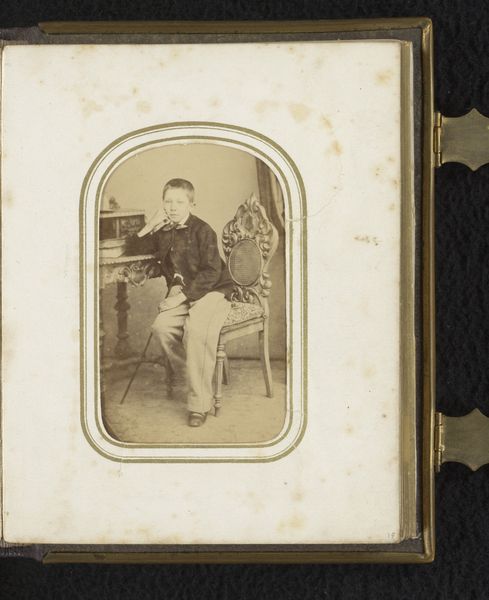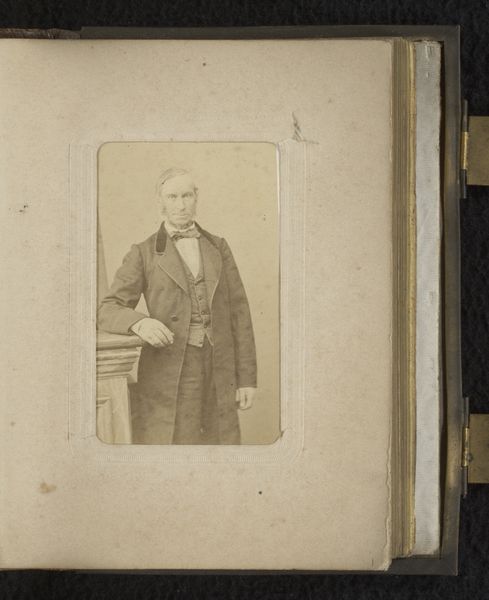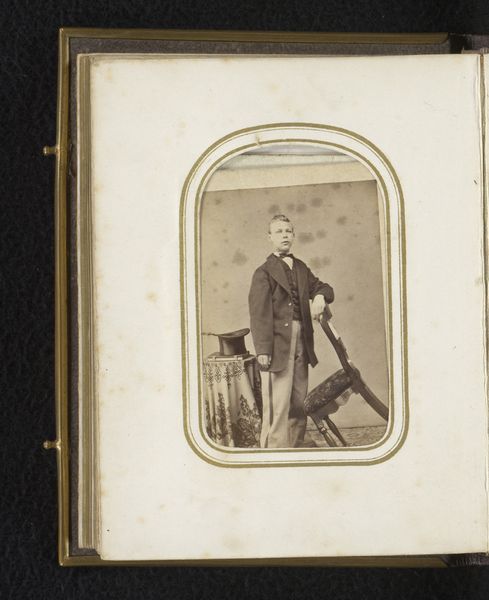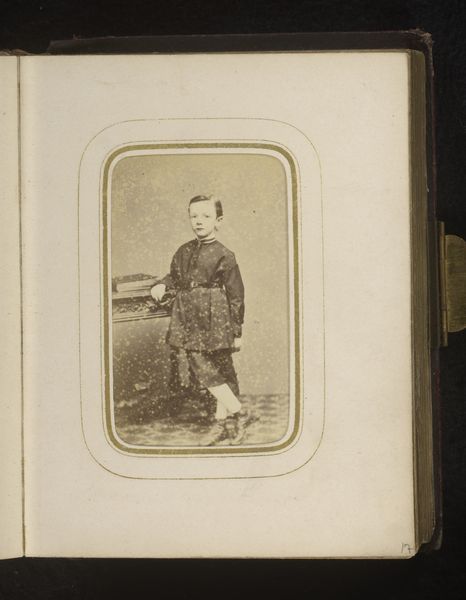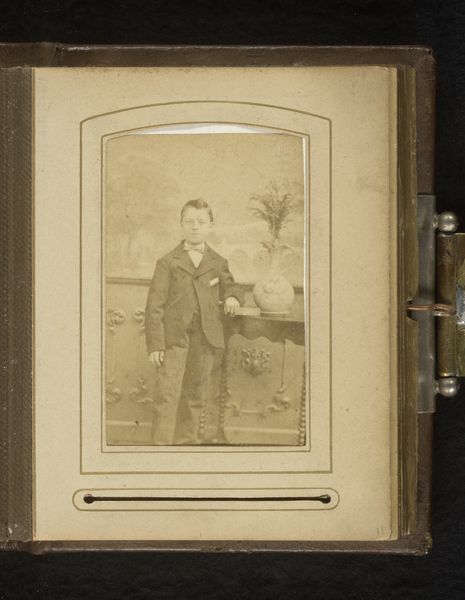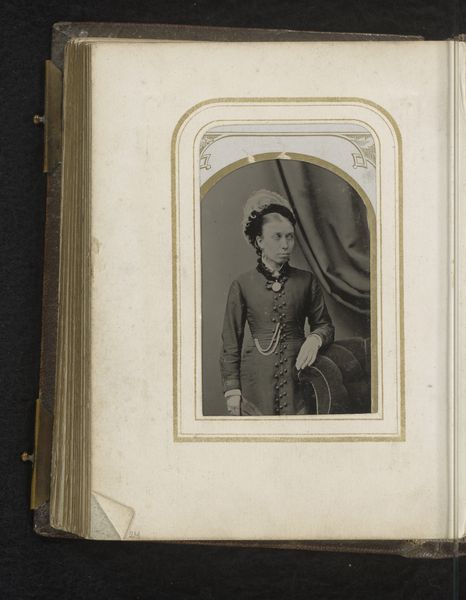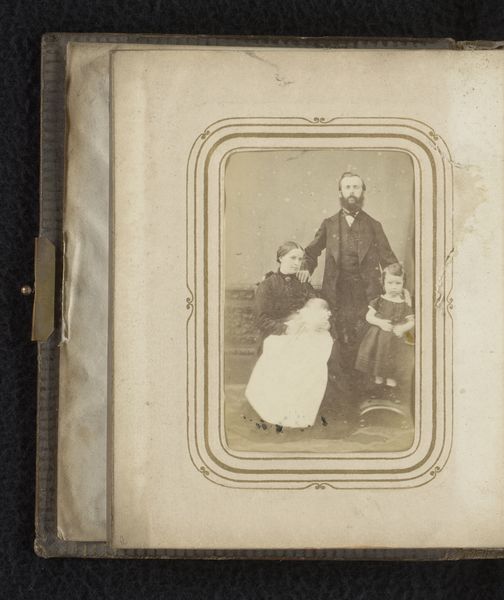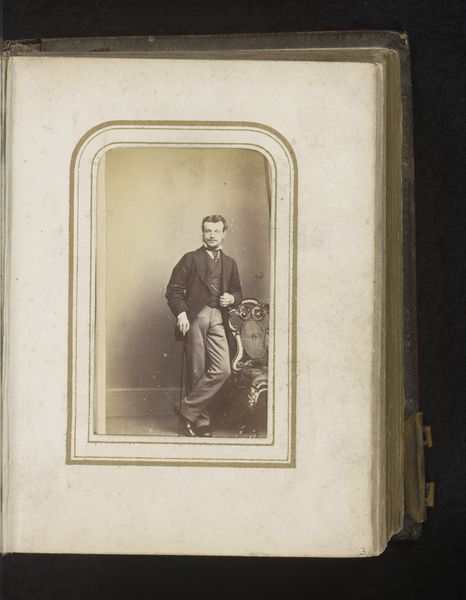
daguerreotype, photography
#
portrait
#
daguerreotype
#
photography
#
coloured pencil
Dimensions: height 102 mm, width 61 mm
Copyright: Rijks Museum: Open Domain
Curator: Here we have an interesting find: an early portrait identified as ‘Portret van een man bij een stoel,’ dating from the period between 1855 and 1880. It is believed to be a daguerreotype photograph. Editor: Immediately, I'm struck by the stillness of the subject, it's like a ghost has been captured within that elaborate frame. It projects a mood of almost solemn self-importance. Curator: That mood is quite common for the era. This piece reflects the rise of the middle class and their aspirations. Photographic portraits became a signifier of social status, of having made it. A stark contrast to the elite paintings of prior centuries. Editor: Absolutely, and I think it also speaks to something deeper, a quiet desperation, almost, in seeking a legacy. Here we have someone positioning themselves—literally and figuratively—within a specific societal context, desperate to participate in the ever growing colonial project. How aware do you think this man was about what he was supporting through this portrait? Curator: That's a perceptive point. It’s likely that his awareness was limited to his immediate social and economic ambitions. This new technology made image construction much easier to do. These objects began appearing in all sorts of houses and gave everyday people the opportunity to participate in something like the fashion industry in a small way. We can interpret this through the lens of class consciousness, the impact of colonialism on individual identity, and how early photography was intertwined with emerging power dynamics. Editor: Do you think the stiff posture, that deliberate attempt to emulate classical portraiture, contributes to a sense of... artifice? Or perhaps it's a sincere effort to participate in and believe the image? Curator: It is both, I would argue. The performative aspect is crucial to understanding how identity was negotiated and displayed in this period, but at the same time it gives the work an individual agency and perspective. Editor: Thank you for pointing out these complex layers beneath what might at first appear a simple portrait of the era. Curator: And thank you, your line of questioning revealed its deep contextual significance and impact during its time.
Comments
No comments
Be the first to comment and join the conversation on the ultimate creative platform.
